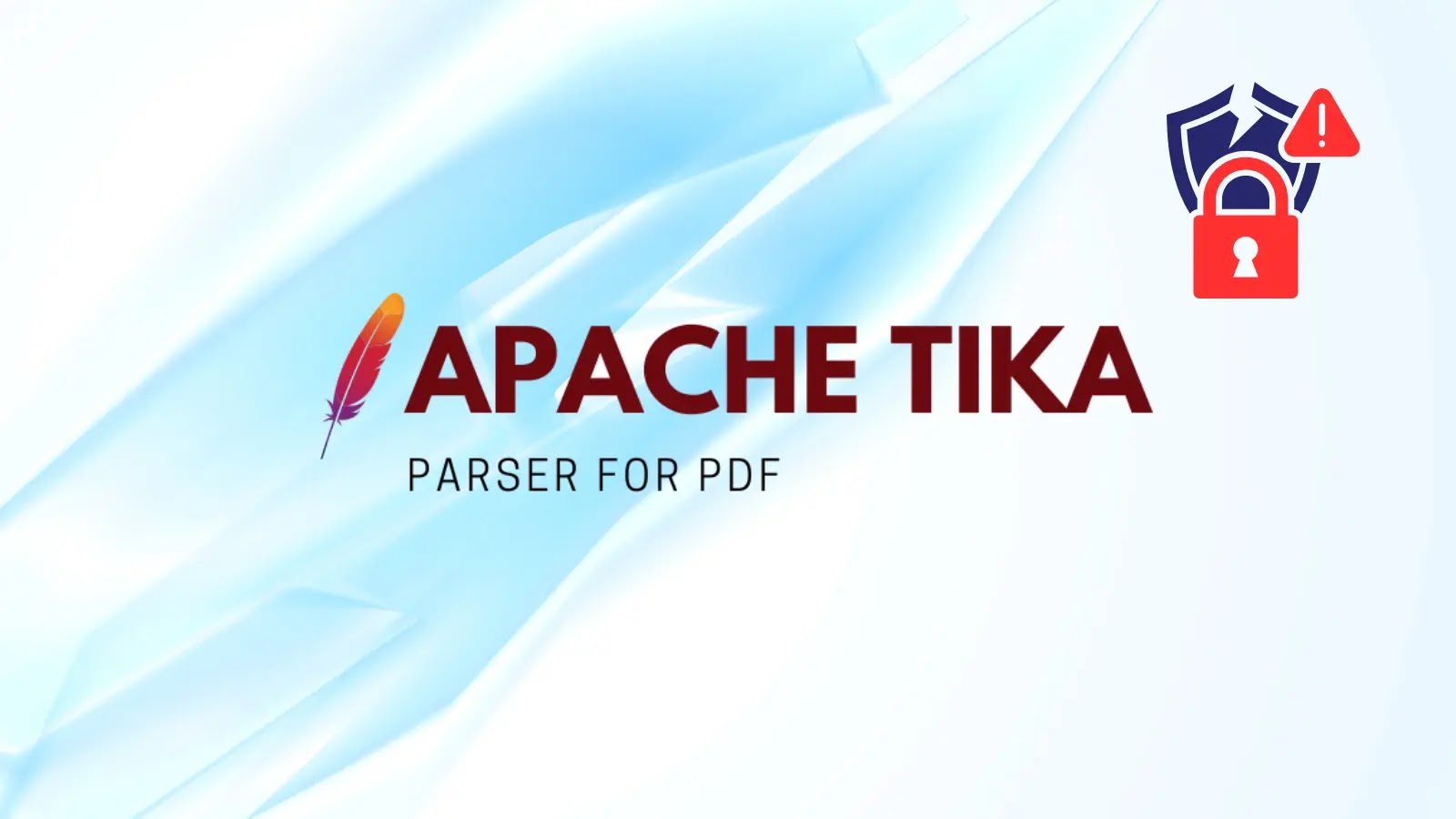A significant security flaw has been identified in Apache Tika’s PDF parser module, potentially allowing unauthorized access to sensitive information and enabling malicious requests to internal systems. This vulnerability, labeled CVE-2025-54988, impacts various versions of the widely utilized document parsing library and has been rated as critical by security experts.
Understanding the XXE Vulnerability
The root of this issue lies in an XML External Entity (XXE) injection vulnerability within Apache Tika’s PDF parser module (org.apache.tika:tika-parser-pdf-module). Security researchers Paras Jain and Yakov Shafranovich from Amazon discovered that versions 1.13 through 3.2.1 are vulnerable to exploitation via specially crafted XFA (XML Forms Architecture) files embedded in PDF documents.
XFA, developed by Adobe, allows PDF documents to include dynamic form content using XML structures. However, improper handling of external entity references in these XML structures within Tika’s parser creates an avenue for malicious exploitation. By manipulating XFA content, attackers can trigger XXE processing, leading to unauthorized data disclosure and server-side request forgery (SSRF) attacks.
The vulnerability extends to multiple Apache Tika packages that depend on the PDF parser module, including:
– tika-parsers-standard-modules
– tika-parsers-standard-package
– tika-app
– tika-grpc
– tika-server-standard
This widespread impact significantly increases the potential attack surface across enterprise environments that rely on Tika for document processing capabilities.
Risk Factors and Potential Impact
The primary risk associated with this vulnerability is unauthorized access to sensitive data. Exploiting the XXE weakness allows attackers to:
– Read local files on the server
– Access internal network resources
– Force the vulnerable system to make requests to attacker-controlled servers
These actions can lead to data leakage, internal network reconnaissance, and further system compromise. The prerequisites for exploitation include:
– The ability to submit a malicious PDF file to the Tika parser
– The PDF containing crafted XFA content
– The target system running a vulnerable version of Tika
– Minimal user interaction required
Given these factors, the severity of this vulnerability is classified as critical.
Mitigation Strategies
Addressing this vulnerability promptly is crucial due to its potential for sensitive data exfiltration and internal network reconnaissance. Organizations using affected versions should take the following steps:
1. Immediate Upgrade: Upgrade to Apache Tika version 3.2.2, which includes the necessary security fixes to address the XXE vulnerability. The Apache Software Foundation released this patched version specifically to mitigate the identified security risk.
2. Implement Additional Security Measures:
– Input Validation: Ensure thorough validation of PDF uploads to prevent malicious content from being processed.
– Network Segmentation: Limit the potential impact of XXE exploitation by segmenting networks appropriately.
– Monitoring: Establish monitoring mechanisms to detect suspicious XML processing activities.
Given the critical nature of this vulnerability and the widespread use of Apache Tika in enterprise document processing workflows, security teams should prioritize this update in their vulnerability management programs.
Conclusion
The discovery of CVE-2025-54988 underscores the importance of vigilant security practices in software development and maintenance. Organizations must stay informed about vulnerabilities in widely used libraries like Apache Tika and act swiftly to apply patches and implement security measures to protect sensitive data and maintain system integrity.



